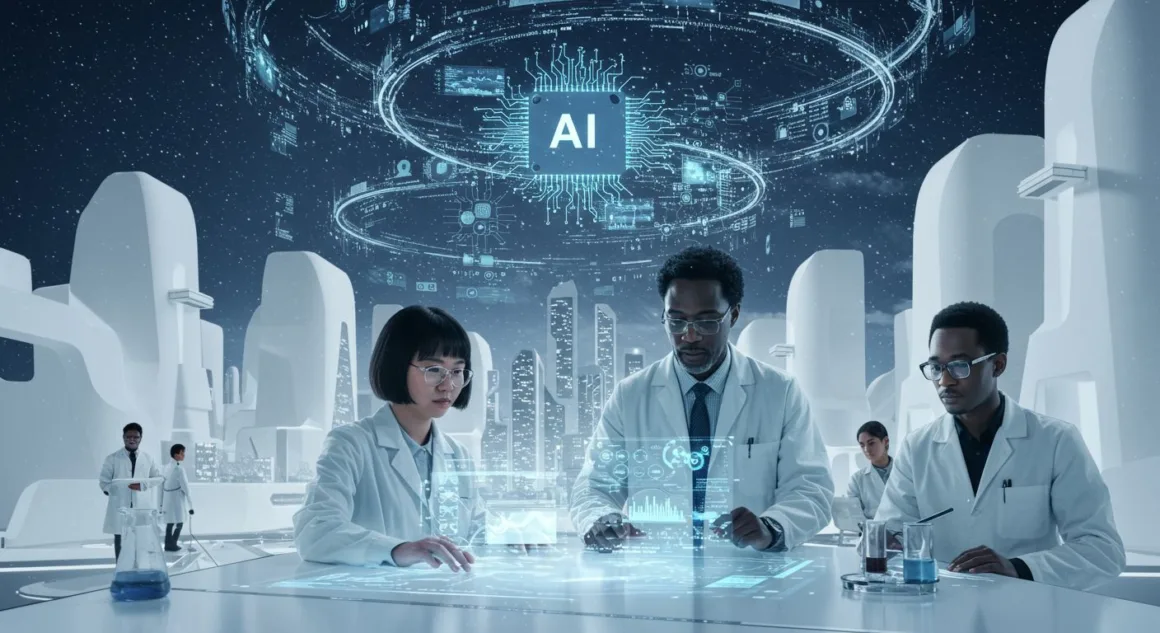Table of Contents Show
Artificial Intelligence (AI) has entered a new era in 2025, evolving beyond conventional machine learning and automation to become an integral part of nearly every industry. From generative models and autonomous systems to AI-driven biotechnology and ethical governance frameworks, the frontier of AI continues to expand rapidly. This article examines the most significant and promising advancements in AI, highlighting the technologies that are transforming the way we live, work, and interact.
1. Generative AI 2.0: Beyond Text and Image
In 2022 and 2023, generative AI exploded into the mainstream with models like ChatGPT, DALL·E, and Midjourney. By 2025, the second generation of generative AI will deliver multimodal capabilities far surpassing those of early iterations.
Multimodal AI models now seamlessly combine text, images, video, and audio into cohesive outputs. This allows for AI-powered tools that can, for example, generate a video tutorial from a simple written prompt or produce realistic voiceovers in multiple languages and accents. OpenAI, Google DeepMind, and Anthropic have all released multimodal systems that understand and generate cross-format content with impressive fluency.
In addition, generative design is transforming industries like fashion, architecture, and automotive design. Designers now co-create with AI, using it as a collaborative partner to rapidly prototype innovative and customized solutions that were once impractical.
Related reading: The Use of AI in Indoor Gardening + Its Benefits
2. Autonomous Agents and AI Companions
While early AI tools required direct input and oversight, today’s autonomous agents are capable of initiating tasks, making decisions, and adapting in real-time. These agents are used in fields ranging from customer service to scientific research.
AI agents now navigate complex environments, handle multi-step objectives, and even collaborate. For example, AI research assistants can plan and conduct virtual experiments, summarize findings, and suggest follow-up actions without constant human supervision.
At the same time, AI companions are becoming more emotionally intelligent. These bots can simulate empathy, maintain long-term memory, and build a deeper rapport with users. AI companions are increasingly being used for therapy, education, and elder care, especially in countries facing aging populations and healthcare workforce shortages.
3. Neurosymbolic AI: The Fusion of Logic and Learning
Neurosymbolic AI is a powerful hybrid approach that combines the pattern recognition strengths of deep learning with the logic and reasoning capabilities of symbolic AI. This helps address one of the long-standing limitations of neural networks: their “black box” nature.
By enabling machines to both learn from data and reason about it, neurosymbolic systems can understand abstract rules, solve math problems, and explain their reasoning in human terms. This makes them especially valuable in fields like law, medicine, and education, where transparency and accountability are essential.
IBM, MIT, and several major universities are leading the way in developing robust neurosymbolic architectures that could pave the way for artificial general intelligence (AGI).
Related reading: What Is the Benefit of AI Development?
4. AI in Biotechnology and Drug Discovery
AI’s application in healthcare and biotechnology has reached new heights. With the power to analyze vast datasets of genetic information, chemical compounds, and clinical trial outcomes, AI is revolutionizing drug discovery.
One of the most notable breakthroughs is the integration of generative AI with protein folding models. Building on DeepMind’s AlphaFold, researchers now use AI to design entirely new proteins and peptides tailored for specific medical applications, including personalized cancer therapies and vaccine development.
Startups and pharmaceutical giants alike are employing AI to accelerate the identification of viable drug candidates, reducing R&D timelines from years to months.
5. AI Governance and Ethical Frameworks
As AI becomes more powerful and widespread, the need for responsible development and usage has never been more urgent. Governments and international coalitions have begun enacting frameworks that aim to balance innovation with safety and ethics.
The EU AI Act, finalized in late 2024, sets a precedent as the first comprehensive legal framework regulating AI across sectors. It includes rules about transparency, data governance, and the use of high-risk AI in areas like law enforcement and critical infrastructure.
Meanwhile, companies are adopting AI governance platforms that provide oversight tools for model behavior, bias detection, and performance auditing. Tools like the AI detector, which identify AI-generated content, are gaining popularity in academia, publishing, and content moderation to combat misinformation and uphold authenticity standards.
6. Quantum AI: A Glimpse into the Future
Although still in early development, quantum AI holds the potential to exponentially increase the capabilities of current models. Quantum computing’s ability to process massive, multidimensional datasets opens the door to solving problems that are computationally infeasible today.
Companies like IBM, Google, and startups like Rigetti and PsiQuantum are exploring how quantum algorithms can be applied to optimize neural networks, simulate molecular interactions, and even accelerate deep learning training.
In the next few years, hybrid quantum-classical AI systems could emerge as a new standard for solving previously intractable scientific and engineering problems.
7. Human-AI Collaboration at Scale
Perhaps the most profound shift is not in what AI can do alone, but in how it augments human capabilities. From co-writing novels to diagnosing diseases alongside doctors, AI is becoming a trusted collaborator.
Tools that integrate AI into everyday workflows—like AI-enabled office suites, coding assistants, and personal productivity agents—are transforming the nature of work. In creative fields, AI is empowering individuals to produce professional-grade output without the need for specialized training or large teams.
The next wave of productivity growth will likely stem from augmented intelligence, where the synergy between human intuition and AI computation leads to outcomes neither could achieve alone.
Final Thoughts
The AI technologies emerging in 2025 are not just extensions of previous innovations—they represent a fundamental transformation in how intelligence is applied across domains. As AI continues to evolve from a tool to a collaborator, its impact will be defined not just by how smart the machines become, but by how wisely we choose to use them.
The challenge now lies not in whether AI can do something, but in ensuring that it does so responsibly, ethically, and for the benefit of all.










